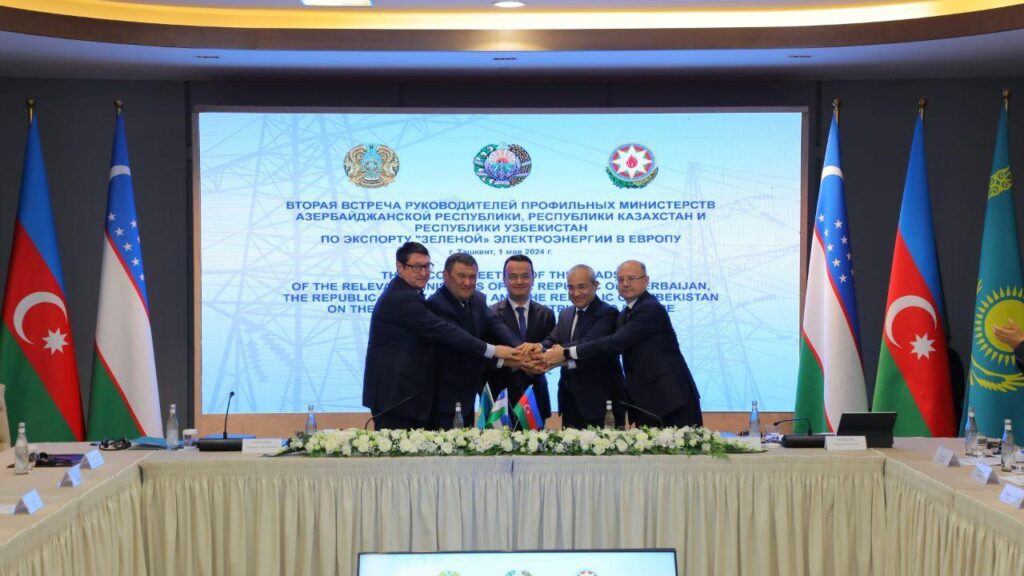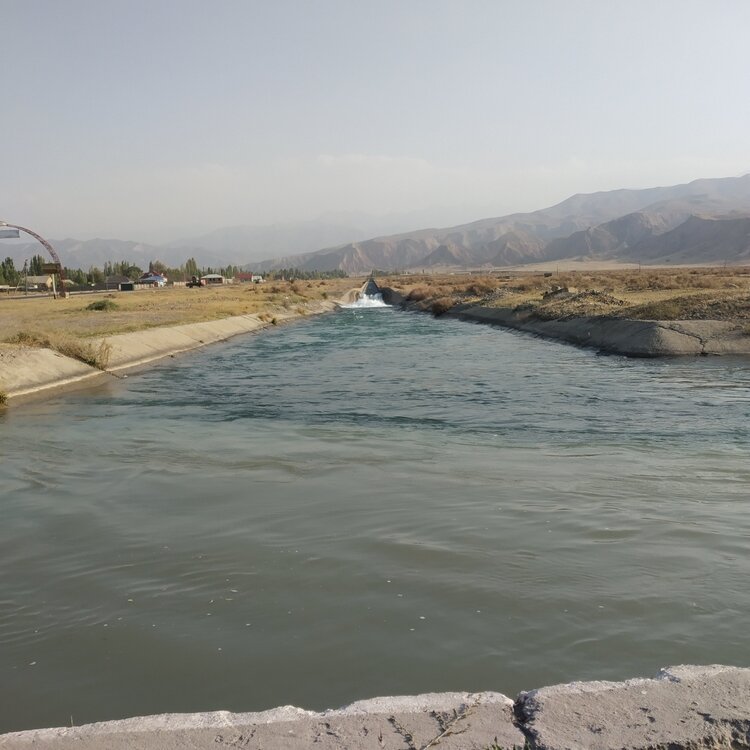Viewing results 7 - 12 of 78
At the end of April, a Memorandum of Understanding was signed by the Ministry of Energy of Kazakhstan, KEPCO and Doosan Enerbility regarding the South Korean companies’ investment in modernizing Kazakhstan’s GRES Topar power plant and power plants in Astana, Almaty, and Pavlodar. Kazakh Invest welcomed the Korean partners’ pledge to provide innovative environmental solutions to increase the plants’ productivity. In support of the initiative, Kim Jung-Kwan, Senior Vice President of Doosan Enerbility, commented, "The environmental solutions of KEPCO and Doosan Enerbility are optimal for the government of Kazakhstan, which seeks to reduce the level of air pollution in the country. After signing this memorandum, we will work together to contribute to the development of environmentally friendly energy projects in Kazakhstan.”
On 1 May , Azerbaijan, Kazakhstan, and Uzbekistan’s ministers of energy gathered in Tashkent to sign a memorandum of cooperation aimed at connecting their countries’ energy systems. The focus of the initiative is to explore means of connecting energy systems via a high-voltage cable embedded in the Caspian Sea to enable further export of green energy from Azerbaijan, Kazakhstan, and Uzbekistan to European Union countries. Referencing the parties’ earlier draft technical specification for the deep-sea cable, Kazakhstan’s Minister of Energy Almasadam Satkaliev stated, “A proposed business model will be prepared for the development of international transmission corridors - financing, revenue, ownership - and the sale of green energy to European Union countries.” Meanwhile, Asiaplustj.info reports that Tajikistan is still not being envisioned as a part of the system. As that publication notes, Uzbekistan's energy system currently operates in parallel with the energy systems of Kyrgyzstan and Kazakhstan within the framework of the United Energy System of Central Asia (UES CA), which was created under the Soviet Union. This system was abandoned by Turkmenistan in 2003 because Uzbekistan refused to allow transit of Turkmen-produced electricity through its infrastructure. "In November 2009, after a major accident in Tajikistan's energy system, Uzbekistan unilaterally left the UES CA, which automatically left Tajikistan out of this system as well. In 2018, Uzbekistan restored parallel operation within the regional system. Since 2019, with financial support from the Asian Development Bank, work has been underway to bring Tajikistan back into the unified energy ring of Central Asia. The Ministry of Energy of Tajikistan last summer reported on its intentions... to join the regional system by the end of 2023. but this has not happened so far," the report noted.
On 30 April, a government resolution was signed by the Prime Minister of Kazakhstan Olzhas Bektenov for the establishment of a national hydrogeological service under the name of Kazhydrogeology. Increasingly used worldwide, hydrogeology records movement and storage of water in the crust of the Earth, maps and quantifies water stored in underground 'acquifiers', identifies pathways of flow and discharge, and assesses the chemical composition of underground water. Kazhydrogeology is tasked with making a full inventory of the country's groundwater deposits and water intake wells to create an extensive database of 4,300 explored groundwater areas and in addition, provide comprehensive digitalization of the hydrogeological industry through the introduction of an automated groundwater monitoring system. Prospecting and exploration work will be undertaken to increase the volume of available underground water resources in regions where water is scarce, to optimize provision for the general population, the economic sector, and irrigation. The new agency also plans to explore the use of geothermal groundwater, as an alternative source of energy, to meet the needs of thermal power engineering, greenhouses, and fish farms.
Kazakh military units that deployed to help with flood control measures in the past weeks are returning to their barracks as the crisis that hit large parts of the country winds down. “Due to the stabilization of the situation and the drop in water levels, some of the personnel and military equipment of the armed forces are returning to their permanent deployment points from the West Kazakhstan, North Kazakhstan and Akmola regions,” Ruslan Zhangulin, spokesman for the Defense Ministry, said on Monday. About 2,200 military personnel and 16 pieces of military equipment were involved in flood control as of Saturday, according to Zhangulin. The military was involved in evacuations and building barriers to prevent water flows during the flooding, which began in March and forced the evacuation of more than 100,000 people as winter snow melted with the arrival of warmer temperatures. Nearly 40,000 have since returned to their homes. President Kassym-Jomart Tokayev described the floods as Kazakhstan’s worst natural disaster in 80 years.
The Kazakh Ministry of Water Resources and Irrigation has announced plans to build 20 new reservoirs with a capacity of 2.5 billion cubic meters by 2030. During the first stage, ten reservoirs will be constructed in the regions of Akmola, West Kazakhstan, Zhambyl, Kyzylorda and Zhetisu, and in the south, two more reservoirs will complement that of Kensai-Koskorgan-2 , already in operation in the Turkestan region. The installation of eight new reservoirs will then follow elsewhere. Once completed, the project will reduce the country's dependence on water flowing from upstream Kyrgyzstan and China by 25%, help combat drought in southern Kazakhstan and conversely, reduce the threat of flooding in 70 rural settlements with a total population of 137 thousand people. In addition, irrigation will be provided for a further 250 thousand hectares of farmland. Plans are also in place to reconstruct 15 existing reservoirs with a total capacity of 1.9 billion cubic meters, with work on six reservoirs in Aktobe, West Kazakhstan, Zhambyl, Kostanay, Turkestan regions and the city of Astana, scheduled to start this year.
According to Kazakhstan’s Ministry of Energy, the country’s production of natural gas which has been has steadily growing in recent years, is expected to reach 60.456 billion m3 in 2024. More than 85% of natural gas in Kazakhstan is produced by the Tengiz (27%), Karachaganak (38%) and Kashagan (20%) projects. In 2023, natural gas production in Kazakhstan totaled 59.063 billion m3, including 16.009 billion m3 at Tengiz, 22.385 billion m3 at Karachaganak, and 11.856 billion m3 at Kashagan. Domestic consumption in 2024 is intended to reach 20.9 billion m3.








